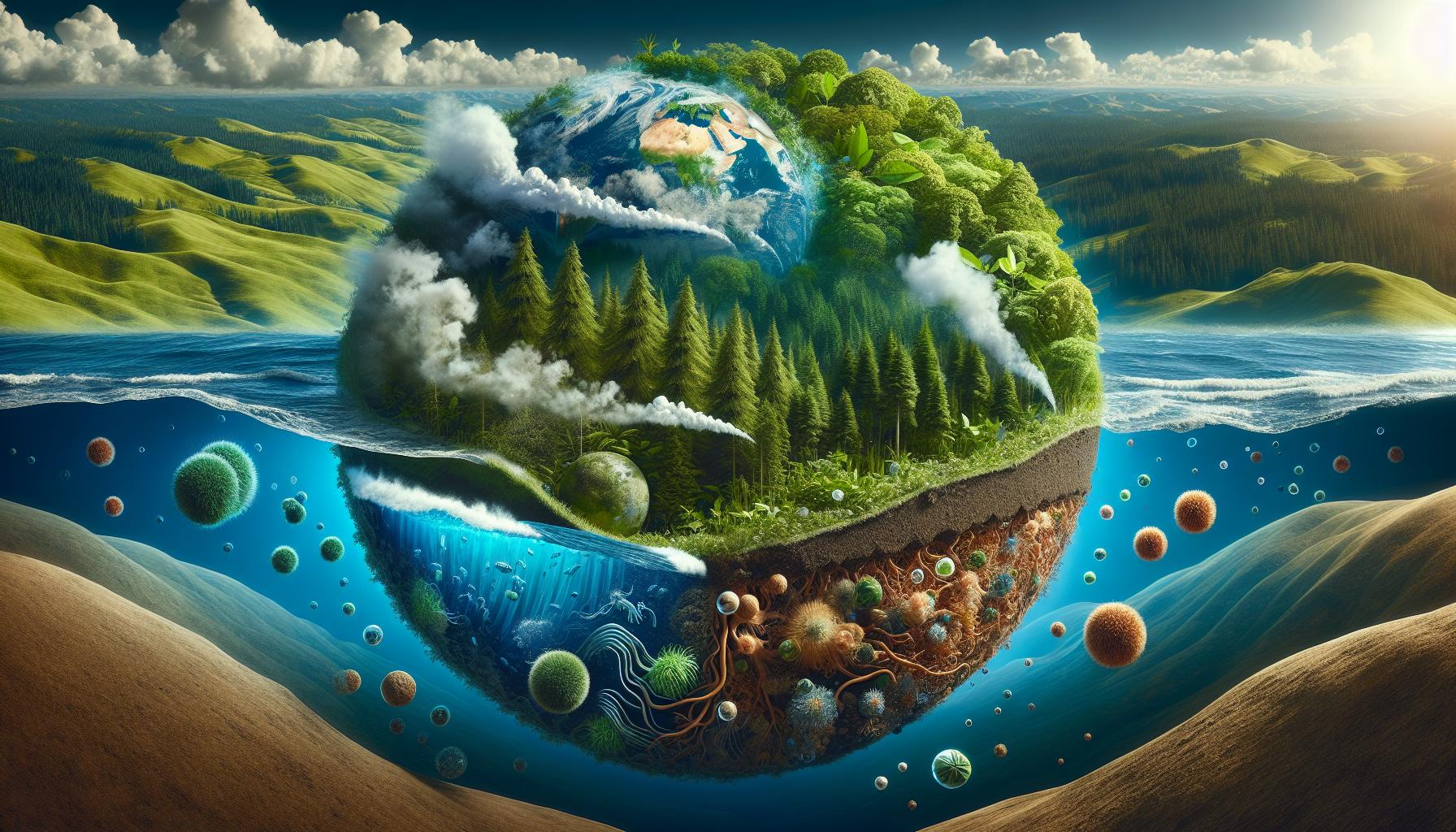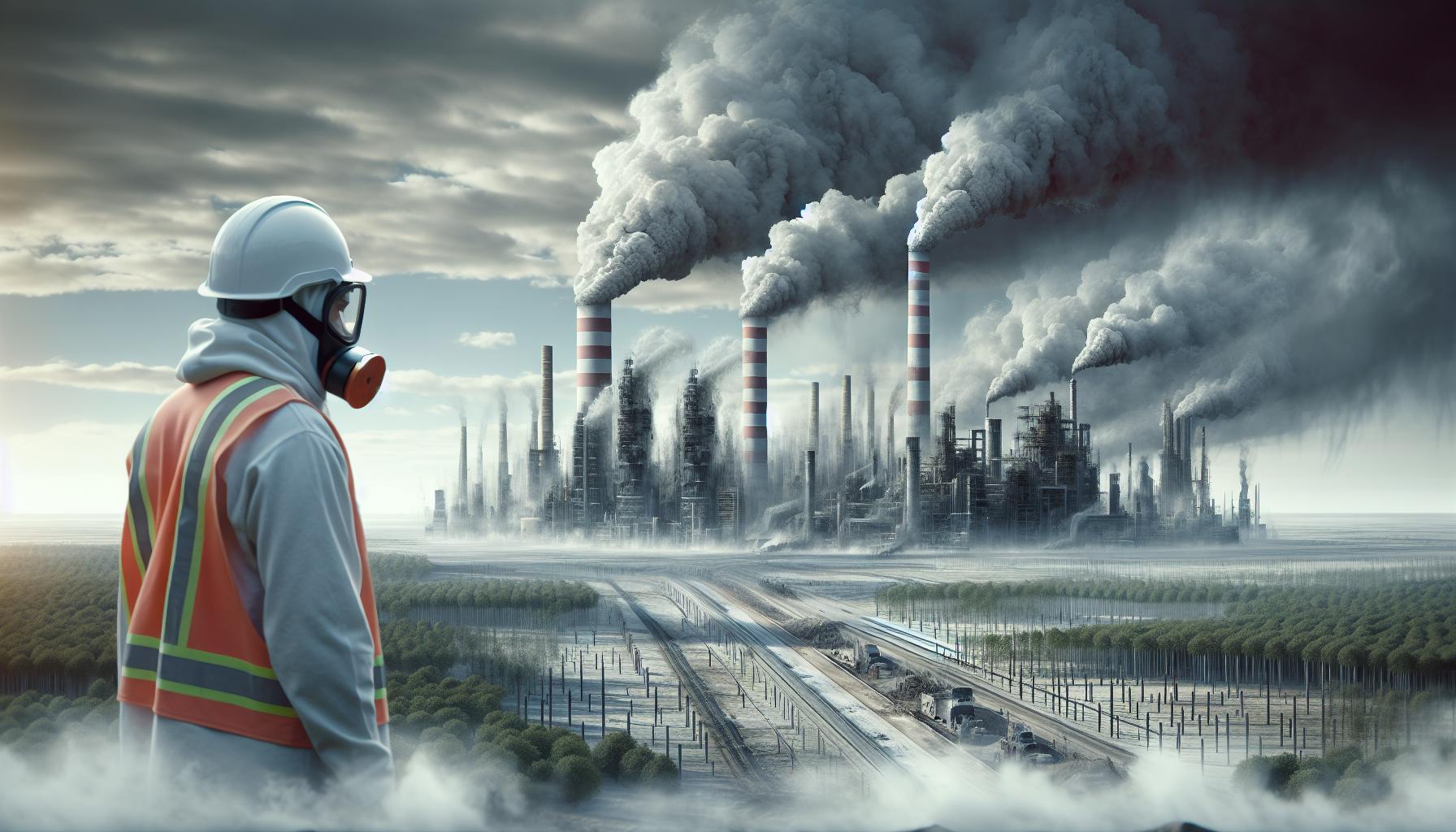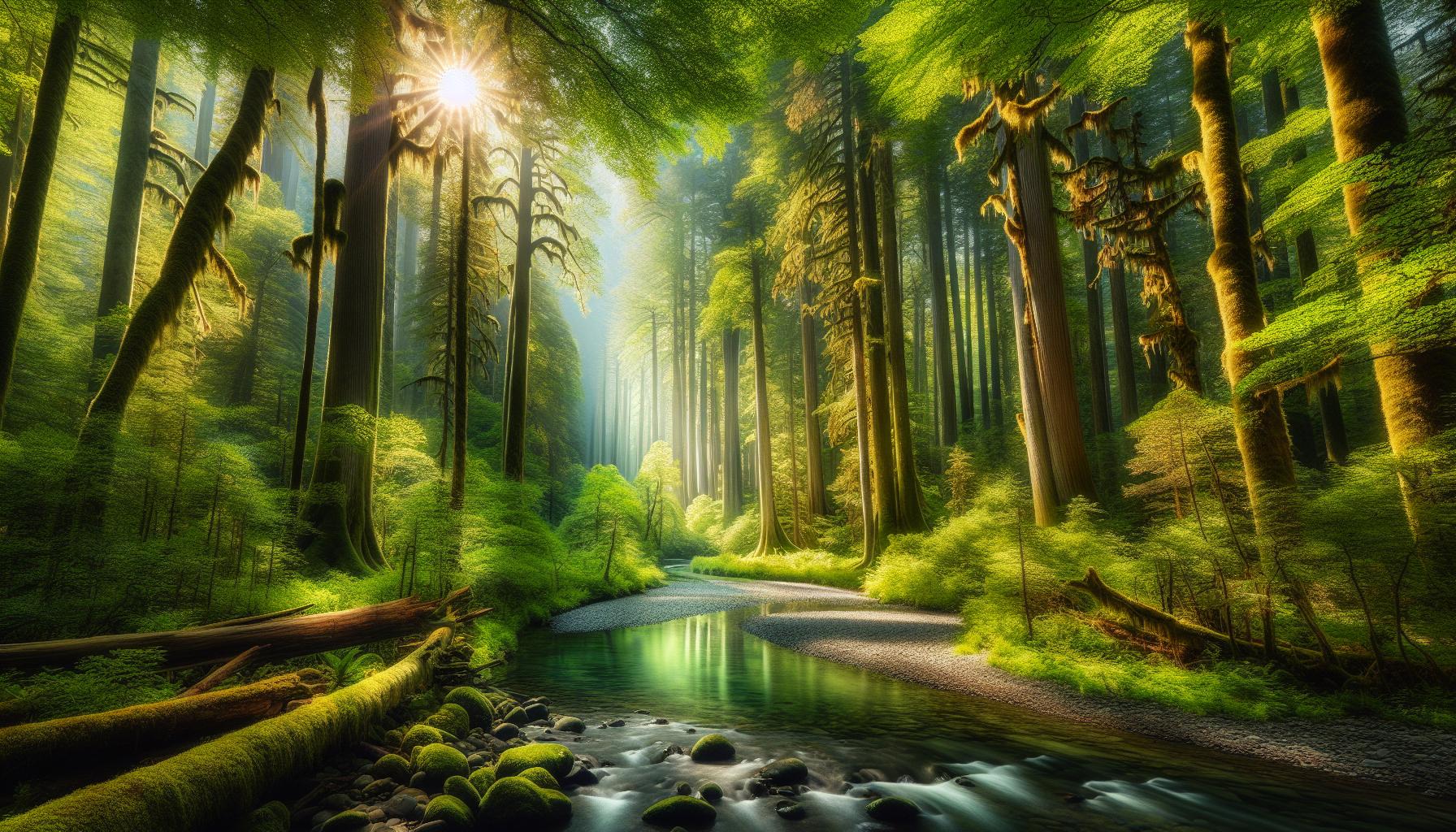The carbon cycle stands as one of nature’s most fascinating processes, orchestrating the continuous movement of carbon through Earth’s various systems. From the air we breathe to the food we eat, this essential element flows through living organisms, oceans, atmosphere, and soil in an intricate dance of chemical reactions and biological processes.
Understanding the carbon cycle isn’t just for science enthusiasts – it’s crucial for everyone who calls Earth home. Think of it as nature’s ultimate recycling program, where carbon atoms travel from plants to animals, from the atmosphere to the oceans, and back again. This remarkable system has maintained life on our planet for millions of years, though human activities have recently begun to influence its delicate balance.
Esquema:Svx8ivzxhqy= Ciclo Del Carbono
The carbon cycle represents a continuous exchange of carbon atoms between Earth’s biosphere, atmosphere, oceans, and geosphere. This biogeochemical process maintains the planet’s carbon balance through various natural pathways.
Key Components of the Carbon Cycle
Carbon moves through distinct processes that form an interconnected system:
- Photosynthesis converts atmospheric CO2 into organic compounds
- Cellular respiration releases CO2 when organisms break down glucose
- Decomposition transforms dead organic matter into soil carbon
- Ocean absorption exchanges carbon between air and seawater
- Volcanic activity releases carbon stored in Earth’s crust
- Weathering breaks down carbon-containing rocks
- Forest fires release stored carbon back into the atmosphere
Carbon Reservoirs in Nature
Earth’s carbon storage locations vary in size and exchange rates:
| Reservoir | Carbon Content (Gigatons) | Exchange Time |
|---|---|---|
| Atmosphere | 750 | 4-6 years |
| Oceans | 38,000 | 200-1000 years |
| Soil | 2,000 | 10-100 years |
| Vegetation | 550 | 1-50 years |
| Fossil Deposits | 4,000 | Millions of years |
The oceans contain the largest active carbon reservoir, storing 50 times more carbon than the atmosphere. Soil organic matter represents the second-largest dynamic reservoir, containing three times more carbon than vegetation. The deep ocean sediments and rock formations hold the most permanent carbon deposits.
Carbon Exchange Between Earth’s Spheres

Carbon moves continuously between Earth’s major spheres through natural processes. These exchanges maintain the planet’s carbon balance through specific pathways between the atmosphere, biosphere, hydrosphere, and geosphere.
Atmosphere-Biosphere Exchange
Plants absorb atmospheric CO2 through photosynthesis at a rate of 120 gigatons per year. Terrestrial organisms release carbon back into the atmosphere through cellular respiration, generating 60 gigatons annually. Soil microorganisms contribute an additional 60 gigatons of carbon through decomposition processes. Seasonal variations affect these exchange rates, with temperate forests showing higher carbon uptake during spring and summer months. Forest fires release stored carbon rapidly, emitting 5-10 gigatons annually through biomass burning.
Ocean-Atmosphere Exchange
Oceans exchange approximately 90 gigatons of carbon with the atmosphere annually through direct gas transfer. Surface waters absorb CO2 in cold regions where carbon solubility increases. Warm ocean regions release CO2 back to the atmosphere through upwelling processes. Phytoplankton in surface waters capture 45 gigatons of carbon yearly through photosynthesis. Marine organisms contribute to carbon exchange through the biological pump, transferring organic carbon to deep ocean waters. Dissolved carbon moves between surface and deep waters through ocean circulation patterns, creating regional variations in exchange rates.
| Carbon Exchange Process | Annual Rate (Gigatons) |
|---|---|
| Plant Photosynthesis | 120 |
| Cellular Respiration | 60 |
| Soil Decomposition | 60 |
| Ocean-Atmosphere | 90 |
| Marine Photosynthesis | 45 |
Human Impact on the Carbon Cycle

Human activities have significantly altered the natural carbon cycle through increased greenhouse gas emissions and changes in land use patterns. These anthropogenic impacts have accelerated carbon release into the atmosphere at rates unprecedented in Earth’s recent history.
Industrial Activities and Carbon Emissions
Industrial processes release 35 gigatons of carbon dioxide into the atmosphere annually through fossil fuel combustion. Power plants contribute 40% of global industrial emissions, while manufacturing facilities account for 30%. Transportation sectors add 25% of carbon emissions through vehicle exhaust, shipping operations and aviation activities. Steel production generates 7% of industrial carbon emissions, releasing 2.6 gigatons annually through coke combustion and limestone processing. Chemical manufacturing plants emit 2 gigatons of CO2 yearly from various production processes including ammonia synthesis, ethylene production and cement manufacturing.
Deforestation Effects
Tropical deforestation releases 2.9 gigatons of carbon into the atmosphere annually. Large scale forest clearing in the Amazon removes 2.2 million acres of carbon-absorbing trees each year. Indonesia loses 1.6 million acres of forest annually, reducing its carbon absorption capacity by 15%. Forest degradation through selective logging decreases carbon storage potential by 25% in affected areas. Agricultural expansion claims 80% of deforested land, converting carbon sinks into emission sources. Palm oil plantations in Southeast Asia have replaced 27 million acres of natural forest, reducing carbon sequestration by 45%. Mining operations clear 500,000 acres of forest yearly, eliminating vital carbon absorption zones.
Balancing the Global Carbon Budget

The global carbon budget represents the delicate equilibrium between carbon sources and sinks in Earth’s systems. This balance determines atmospheric carbon dioxide concentrations and influences global climate patterns.
Natural Carbon Sinks
Natural carbon sinks store significant amounts of carbon from the atmosphere through biological processes. Forests absorb 7.6 gigatons of carbon annually through photosynthesis, making them the largest terrestrial carbon sink. Oceans capture 2.5 gigatons of carbon each year through dissolution and biological processes. Peatlands store 550 gigatons of carbon in their soils, representing 30% of all terrestrial carbon. Coastal ecosystems like mangroves and seagrass meadows sequester carbon 40 times faster than tropical rainforests. Soil organic matter contains 1,500 gigatons of carbon, acting as a long-term storage reservoir.
Carbon Sequestration Methods
Carbon sequestration technologies enhance natural carbon storage processes to reduce atmospheric CO2 levels. Direct air capture facilities remove 10,000 tons of CO2 annually through chemical absorption processes. Biochar production converts organic waste into stable carbon, storing it for 100-1000 years. Enhanced weathering techniques spread crushed minerals across agricultural lands, absorbing 0.5-2 tons of CO2 per hectare annually. Ocean fertilization stimulates phytoplankton growth, increasing marine carbon absorption by 15%. Geological storage injects CO2 into underground formations, securing 40 million tons of carbon annually in depleted oil reservoirs.
| Carbon Sink Type | Annual Carbon Storage (Gigatons) |
|---|---|
| Forests | 7.6 |
| Oceans | 2.5 |
| Direct Air Capture | 0.01 |
| Enhanced Weathering | 0.5-2.0 per hectare |
Climate Change and the Carbon Cycle
Climate change disrupts the natural balance of the carbon cycle through various interconnected processes. Rising global temperatures trigger changes in carbon exchange rates between Earth’s major reservoirs, creating complex feedback loops that amplify or moderate climate effects.
Feedback Mechanisms
The carbon cycle contains multiple feedback mechanisms that respond to temperature changes. Marine phytoplankton productivity decreases in warmer waters, reducing CO2 absorption by 6% for each degree Celsius increase. Permafrost thawing releases stored methane into the atmosphere, with current estimates indicating 1.5 gigatons of carbon released annually. Ocean acidification diminishes the ocean’s capacity to absorb CO2, dropping absorption rates by 0.5% yearly since 1990.
| Feedback Type | Impact on Carbon Cycle |
|---|---|
| Ocean Warming | -6% CO2 absorption per °C |
| Permafrost Thaw | +1.5 Gt carbon/year |
| Ocean Acidification | -0.5% absorption/year |
Soil microorganisms become more active in warmer temperatures, accelerating decomposition rates by 10-30%. Forest ecosystems face increased stress from heat waves droughts, reducing their carbon storage capacity by up to 20% during extreme events.
Carbon Cycle
The carbon cycle stands as one of Earth’s most crucial natural processes maintaining life as we know it. While this complex system has sustained our planet for millions of years human activities have significantly disrupted its delicate balance. The increasing carbon dioxide emissions altered land use patterns and climate change impacts pose serious challenges to the cycle’s natural equilibrium.
Understanding and addressing these disruptions isn’t just an environmental concern – it’s essential for maintaining Earth’s habitability. Through continued research innovative carbon sequestration methods and coordinated global action there’s still hope to restore balance to this vital planetary process. The future of our planet depends on how effectively we manage and protect the carbon cycle today.

